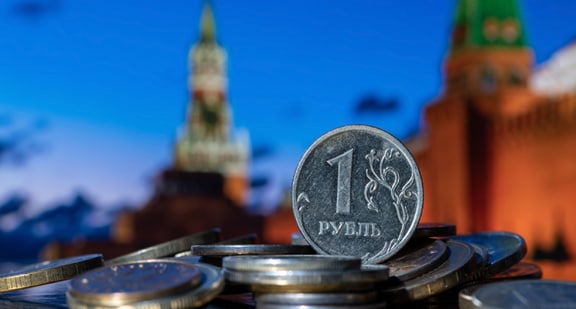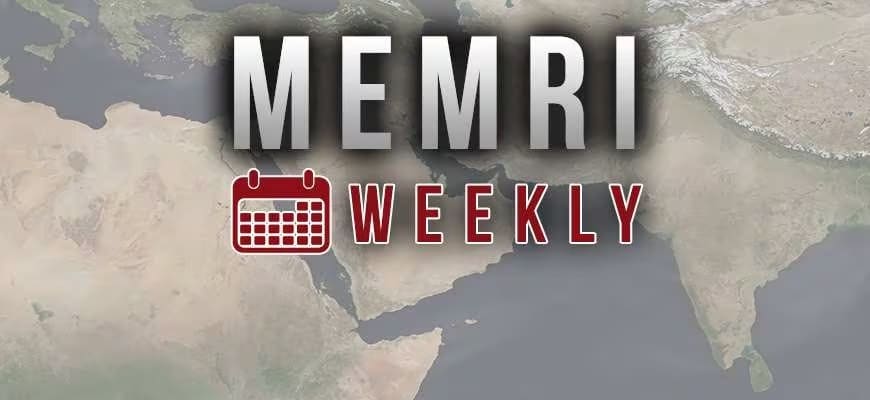From the very start of Putin's war against Ukraine many experts (including myself, at least for several months) had been predicting the Russian economy would collapse due to the Western sanctions, skyrocketing military expenditures, and a decrease in the active workforce caused by the massive mobilization and tremendous exodus of young and self-made people from the country. Almost all of what the analysts expected has happened – but it did not shatter the Russian economy; quite to the contrary, in some respects it has consolidated and strengthened it.
By the end of 2023, as the Russian economy recorded a 3.6 percent growth,[1] the country's GDP exceeded the 2021 figures, and quite recently the IMF revised its projections for 2024 up from 1.1 to 2.6 percent.[2] Why does this happen? I would argue that the reason may reside in a dramatic change in the Kremlin's economic strategy – one that presupposes a rift from the drive to accumulate huge (and often unnecessary) monetary reserves to a policy of stimulating the economy through extended budget financing, even while the government finances are not in their perfect shape, with public debt growing.
To make this argument stronger, I would remind that during the first part of Putin's rule –from approximately 2000 till 2013 – he and his economic team were preoccupied with the idea of limiting the government spending and stockpiling reserves that might be needed if Russia encounters some crisis. Of course, this trend did not imply the methods used during Yeltsin's time, when the government simply refused to pay the contractors the money it owed them, and issuing some monetary substitutes, believing that to be the best way to limit the money supply but in fact it was creating what economists Clifford Gaddy and Barry Ickes once called "Russia's virtual economy."[3]

(Source: Twitter)
Putin Remained Obsessed With The Idea That Russia Should Amass Huge Amounts Of Money In Order To Feel Safe
In the 2000s, President Putin contributed to the restoration of normal monetary transactions in the Russian economy, but he remained obsessed with the idea that the country should amass huge amounts of money in order to feel safe. During this period, Russia's federal budget recorded an average annual surplus of 0.39 percent of GDP (while in the U.S. the average deficit stood at 3.6 percent for the same years).[4] The government's foreign debt, mostly denominated in U.S. dollars, Euros, and Pounds, decreased from $158.7 billion on the day Putin moved into the Kremlin to less than $45 billion in early 2008, while the Stabilization Fund, established and inaugurated in 2004, was filled by $156.8 billion already by the outbreak of the 2008 crisis.
This strategy was somewhat changed later, as the drop in oil prices in 2015 and 2016 and the COVID-19 pandemic corrected the budget figures, but the Kremlin was still unwilling to spend a lot, and it did its best to refill the reserve funds and increase once again the depleted reserves – I would even argue that all this was an important factor behind the prolonged economic stagnation that had happened between 2013 and 2021 (during this entire period, Russia's GDP increased by a mere 8.5 percent, thus progressing by slightly less than one percent per year).[5]
The war in Ukraine has changed a lot as the Kremlin realized its scope and probable timespan by mid-2022. Starting from that time, the Russian government allocated much more money to the military (the official figures suggest an increase from around 3.6 trillion rubles in 2021 to 10.8 trillion rubles in 2024)[6] and increased the payouts for military personnel, both still fighting and already killed in action (the monthly payments to a contract soldier shot up from 40,000 rubles to more than 200,000 rubles per month, and the special enrollment bonus goes up almost every month).[7] This trend resulted in dropping the taboo for debt financing, and the budgetary projections now allow the government to increase Russia's public debt by around 15 trillion rubles by 2026.[8] This can be made easily, I would say, since the individual deposits in the Russian banks exceeded 45 trillion rubles by the start of 2024 (excluding money on the escrow accounts connected with mortgages)[9] and because the banks may buy government bonds and put them to the Central Bank as collateral – this allows the government to borrow at effective rates lower than the rate of inflation as three-quarters of the Central Bank's profits will return to the federal budget.[10] I would also add that the current deficits (around 1.9 percent of GDP for 2023),[11] compared with the 3.6 percent GDP growth,[12] look more impressive that in the U.S., where the 2023 deficit of 6.3 percent of GDP let the economy grow by 2.5 percent.[13]
Russia Decided To Use War To Subsidize The Economy
There was also another trend that observers should not be underestimate. Even while President Putin proclaimed the full convertibility of the ruble to become one of his major goals in economic policy as early as in his 2003 Address to the Federal Assembly,[14] little has been done in this direction for years. Inside Russia, the national currency has been seen mostly as something that can be exchanged into dollars, counted as real money. But in 2022, with many restrictions imposed from outside (like the sanctioning of Russian banks)[15] and from inside (like a ban on exchanging rubles into dollars or an order according to which the people were able to retrieve more than $10,000 from their hard currency accounts only in rubles),[16] the ruble suddenly became a more valuable asset – at the time when the Western sanctions discontinued the servicing of the Russian foreign debt. As a result, the Russian leadership realized that it is freer in executing Western-style financial policies associated with larger amounts of borrowing and even with the use of "helicopter money" to accelerate economic growth.
The debate on whether the government should pour money into the industrial sector has been underway for years, but neither side could score a victory till the war opened the option of orchestrating the same policy "at a limited scale," as the money was granted mostly to the military enterprises, to some infrastructure construction projects, and, last but not least, were directly paid either to soldiers or to their loved ones if the servicemen died (some pro-Kremlin experts stated that the war in Ukraine had created the formation among the military personnel and their relatives of "new wealthy Russian" people, as they receive significant payments from the state).[17] Anyway, both the Kremlin and the government felt much more confident even if the overall economic situation was far from being considered good, or even normal.
So, starting from H2 2022, the Russian leadership changed its strategy. After a successful 2021 (when the federal budget recorded a 530 billion ruble surplus driven by the post-Covid-19 recovery),[18] the budget had plunged into deficit of 3.3 trillion rubles in 2022 with the deficit being kept at the same level of 3.24 trillion rubles in 2023,[19] but it was thought the money used for rearmament would produce a multiplication effect on other branches of the national economy. While in many countries wishing to overcome stagnation, the governments stimulate the consumer demand, the Russian leadership decided to use war as a means of subsidizing the economy through giving a push to military sector and to try to spread the growth elsewhere.
Two factors must be mentioned here.
On the one hand, many Western forecasters seemingly took Russia's economy for a kind of a Soviet one still dominated by the state – but this assumption was totally wrong: Russia by the start of the war had been a market economy for decades with its private sector providing the greater part of employment, so the money injected into one of its parts produced wider growth almost immediately.
On the other hand, the major problem with government financing in all previous years was that it provoked corruption and capital flight fueled both by oligarchs and bureaucrats alike, while these days the dirty money is sealed inside the country due to Western sanctions being used for either domestic investment or domestic consumption. In other words, the war not only produced a change in providing additional financing, but also in the methods it may be used, and in the ways the funds are spreading across the country's economy.
Inflation Will Not Disappear This Year, But It Does Not Look So Important
One should not underestimate the emerging appetite for borrowing and spending in Russia. As the military, the industrialists, and the developers are funded in rubles, the debt financing looks quite effective and is not limited to the military production. The Kremlin spends hundreds of billions of rubles for rebuilding the occupied territories.[20] It continues to subsidize private mortgages,[21] thus pushing the residential construction to the record 110.4 million square meters of new housing in 2023,[22] and it even restarted the huge infrastructure developments in Siberia and the Far East that were frozen in the first months of the war (Russian President Vladimir Putin became so excited with new opportunities that he recently elevated the minimum wage by 18.5 percent to 19,200 rubles per month and promised to increase it again, to 35,000 rubles in 2030).[23]
I would argue that the authorities are not only increasing the borrowing from the domestic market – they seemingly employ some sophisticated schemes used for camouflaging the printing of additional money. For example, several rather large deals were reported in which the Finance Ministry sold Euros from the National Wealth Fund to the Bank of Russia being paid by real rubles – but in fact this currency transactions were made only on paper since EU authorities have blocked most of the Euro-denominated assets.[24] Nevertheless, "technically" the Finance Ministry was perfectly able to switch some part of these funds to the Bank of Russia's books, getting rubles instead (the result may be seen as the statistics recorded the increase of the M2 money aggregate by 24.4 percent in 2022 and by 19.4 percent in 2023).[25] Anyway, additional money supply resulted in real growth, and the latter seems to be quite impressive at least for several years to come, as the Russian industrialists get more orders and their employees earn higher paychecks (the real wages in 2023 shot up by an incredible 7.8 percent compared to the previous year)[26] they may spend, thus creating additional demand and supporting the retail sector.
SUPPORT OUR WORK

The only important problem that arises from the shift of economic strategy, is the return of inflation that has been successfully suppressed, recording figures less than four percent per annum on average between 2016 and 2020.[27] Inflation significantly accelerated last year to an official figure of 7.4 percent with many kinds of foodstuff becoming more expensive by up to 60 percent in 12 months.[28] I think inflation will not disappear this year, but it does not look so important, at least for now, until the government manages to increase nominal wages and retirement payments at a faster pace than the prices grow, which now looks probable.
Can such a system become a basis for balanced and stable growth for a long time? Most probably not, but President Putin had already promised the military industry new orders for the next five to ten years as Russia will try to replenish its arsenals, which were severely depleted during the war, as well as new hikes in the minimum wage and other social benefits that seemingly will lift the demand for goods and services.[29]
Conclusion
No one knows for sure what has caused the change in the Russian government's economic strategy – it may be attributed either to the logic of the war, or to the increased influence of the younger generation of bureaucrats in the Kremlin, or even to Putin's feeling that his "new deal" is able to produce positive effects for the remaining time of his rule while he seems completely indifferent to what will come after he is gone.
However, what can be said for sure is that the new approach might become even a greater gift to Putin than the oil bonanza of the 2000s, allowing him to please his subjects for most of his new six-year term in the Kremlin that he has already secured through an orchestrated election to be held later this week. Not recognizing this may result in another bunch of miscalculations even greater than the one Western strategists and policymakers made in estimating the effect of sanctions.[30]
*Dr. Vladislav Inozemtsev is the MEMRI Russian Media Studies Project Special Advisor, and Founder and Director of the Moscow-based Center for Post-Industrial Studies.
[1] Forbes.ru/finansy/505868-srabotali-na-sklad-pocemu-ekonomika-rossii-v-2023-godu-vyrosla-vyse-ozidanij, February 9, 2024.
[2] Tass.com/economy/1739347, January 30, 2024.
[3] Amazon.com/Russias-Virtual-Economy-Clifford-Gaddy/dp/0815731124; Jstor.org/stable/20049050; Npr.org/transcripts/1090312774?fbclid=IwAR0-25HN1M29jMO9XXNH79n9UVuizjOozGF-DzC1iCrVBhGX2L7dhOgNd2g, April 1, 2022.
[4] Kommersant.ru/doc/1336805, March 15, 2024; Fred.stlouisfed.org/series/FYFSGDA188S, February 28, 2024.
[5] Macrotrends.net/countries/RUS/russia/gdp-growth-rate#:~:text=Russia%20gdp%20growth%20rate%20for,a%200.61%25%20decline%20from%202018.
[6] Minfin.gov.ru/ru/statistics/fedbud/execute?id_57=80041-kratkaya_ezhegodnaya_informatsiya_ob_ispolnenii_federalnogo_byudzheta_mlrd._rub, February 27, 2024; Moscowtimes.ru/2023/11/27/putin-utverdil-rost-rashodov-naarmiyu-dorekorda-sovremen-sssr-a114367, November 27, 2023.
[7] Moscowtimes.ru/2024/03/05/rossiiskie-regioni-massovo-povishayut-viplati-zaverbovannim-na-voinu-a123631, March 5, 2024.
[8] Iz.ru/1606907/sofiia-tokareva/biudzhet-rf-na-2024-2026-gody-priniat-glavnye-tcifry, November 17, 2023.
[9] Cbr.ru/vfs/statistics/BankSector/Borrowings/02_01_Funds_all.xlsx
[10] Consultant.ru/document/cons_doc_LAW_37570/cdf81b8e3df3ac921f02131ec7689f289c6ba650/
[11] Interfax.ru/business/939771, January 11, 2024.
[12] Forbes.ru/finansy/505868-srabotali-na-sklad-pocemu-ekonomika-rossii-v-2023-godu-vyrosla-vyse-ozidanij, February 9, 2024.
[13] Cbo.gov/topics/budget#:~:text=BUDGET%20PROJECTIONS%20FOR%20FY%202024&text=The%20federal%20deficit%20in%202023,percent%20of%20gross%20domestic%20product; Bea.gov/news/2024/gross-domestic-product-fourth-quarter-and-year-2023-advance-estimate#:~:text=GDP%20for%202023,in%202022%20(table%201).
[14] Kremlin.ru/events/president/transcripts/21998, May 16, 2003.
[15] Journal.tinkoff.ru/news/sanctions-banks/, February 26, 2024.
[16] Rbc.ru/finances/07/09/2023/64f9e6ef9a79473bedee1132, September 7, 2023; Rbc.ru/finances/07/03/2024/65e9d1079a79475192660cb6, March 7, 2024.
[17] Rbc.ru/economics/09/06/2023/64818ac49a7947e918133707, June 9, 2023.
[18] Duma.gov.ru/news/54777/
[19] Forbes.ru/finansy/483568-deficit-budzeta-po-itogam-2022-goda-stal-odnim-iz-krupnejsih-v-istorii-rossii, January 10, 2023; Interfax.ru/business/939771, January 11, 2024.
[20] Forbes.ru/finansy/504636-vlasti-zaplanirovali-snizit-dotacii-budzetam-novyh-regionov-v-2024-godu, January 22, 2024.
[21] Rbc.ru/story/65c0f74d9a7947a4ea2a78da, March 7, 2024.
[22] Minstroyrf.gov.ru/press/podvedeny-itogi-zhilishchnogo-stroitelstva-v-2023-godu/, January 26, 2024.
[23] Iz.ru/1602554/2023-11-09/most-cherez-reku-lenu-v-iakutii-dostroiat-do-2028-goda, November 9, 2023; Tass.ru/ekonomika/19534037, December 14, 2023; Kremlin.ru/events/president/news/70565
[24] Svoboda.org/a/rossiyskie-tryuki-s-rezervami-kak-uspeshno-potratitj-to-chego-net/32237085.html, January 25, 2023.
[25] Interfax.ru/business/884031, January 31, 2023; Cbr.ru/statistics/macro_itm/dkfs/sr_ma_estim/
[26] Rbc.ru/economics/28/02/2024/65df594c9a79473672e5b5d0, February 28, 2024.
[27] уровень-инфляции.рф/%D1%82%D0%B0%D0%B1%D0%BB%D0%B8%D1%86%D1%8B-%D0%B8%D0%BD%D1%84%D0%BB%D1%8F%D1%86%D0%B8%D0%B8
[28] уровень-инфляции.рф/%D1%82%D0%B0%D0%B1%D0%BB%D0%B8%D1%86%D1%8B-%D0%B8%D0%BD%D1%84%D0%BB%D1%8F%D1%86%D0%B8%D0%B8; Rbc.ru/economics/19/01/2024/65a8e7c89a79476e220d4d13, January 19, 2024.
[29] Kommersant.ru/doc/6510907, February 15, 2024.
[30] See MEMRI Daily Brief No. 562, The Side Effects Of The Sanctions On Russia, by Dr. Vladislav L. Inozemtsev, January 16, 2024.




